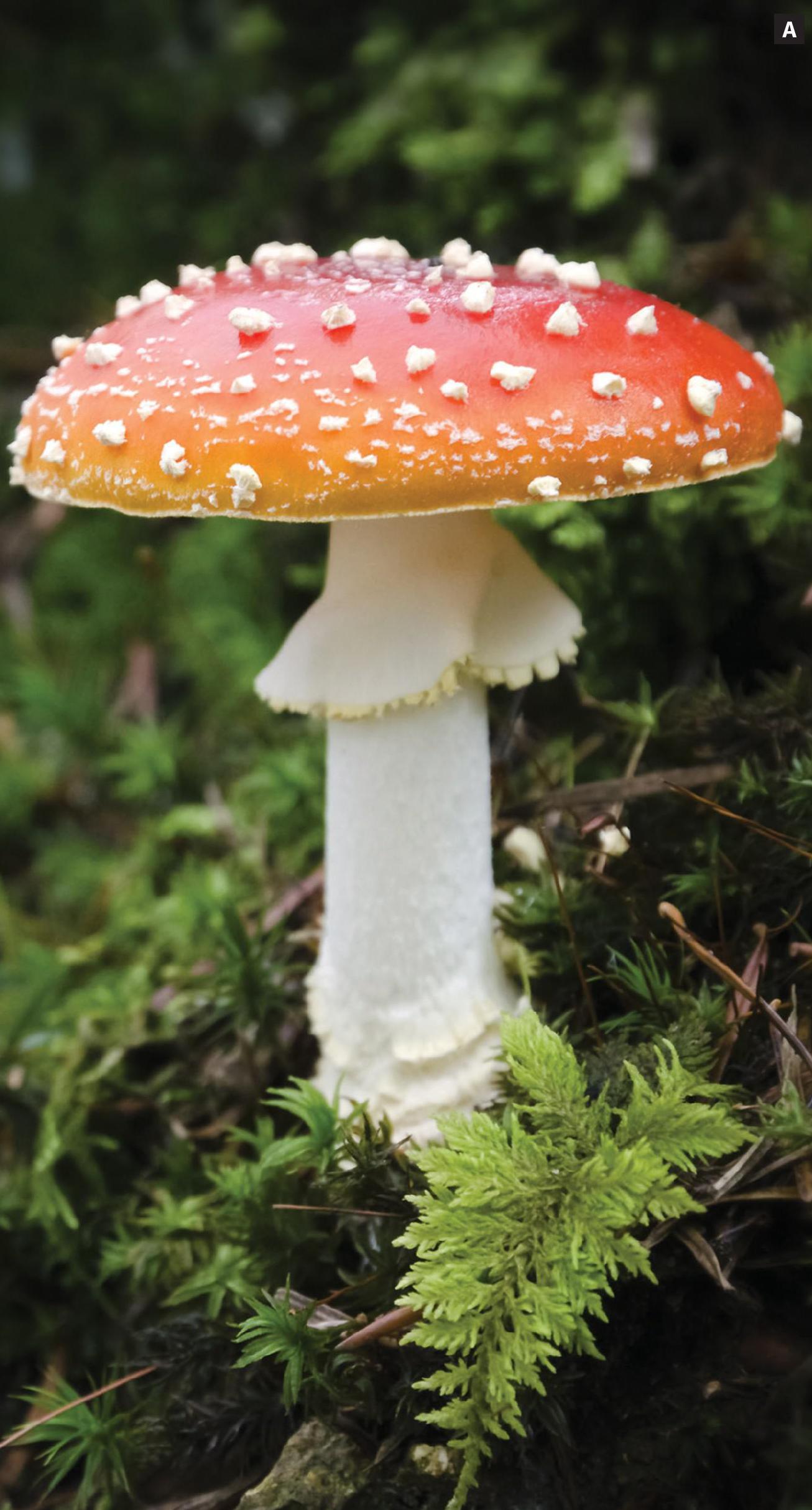
If you go down to the woods today…you might well spot some of the organisms featured here. Autumn in temperate zones is one of the few times we become aware of fungi. That’s because this is the season when many produce toadstools — their reproductive structures. These fruiting bodies (also known as mushrooms) are produced only occasionally by some fungi, with many years of growth unseen before the next crop.
This is true of the fly agaric (A), which spends the majority of its time underground growing on and around plant roots. But these plants do not become diseased as a result — they benefit. The fungi produce tiny thread-like structures called hyphae, which create a mantle around the roots and extend out into the soil. So while the fungi take in the sugars they need from the plants, they take up more water and minerals (which the plants need) than the roots would be able to absorb on their own. Plants grown without their fungal partners grow significantly less well than plants grown with their fungi.
Your organisation does not have access to this article.
Sign up today to give your students the edge they need to achieve their best grades with subject expertise
Subscribe




